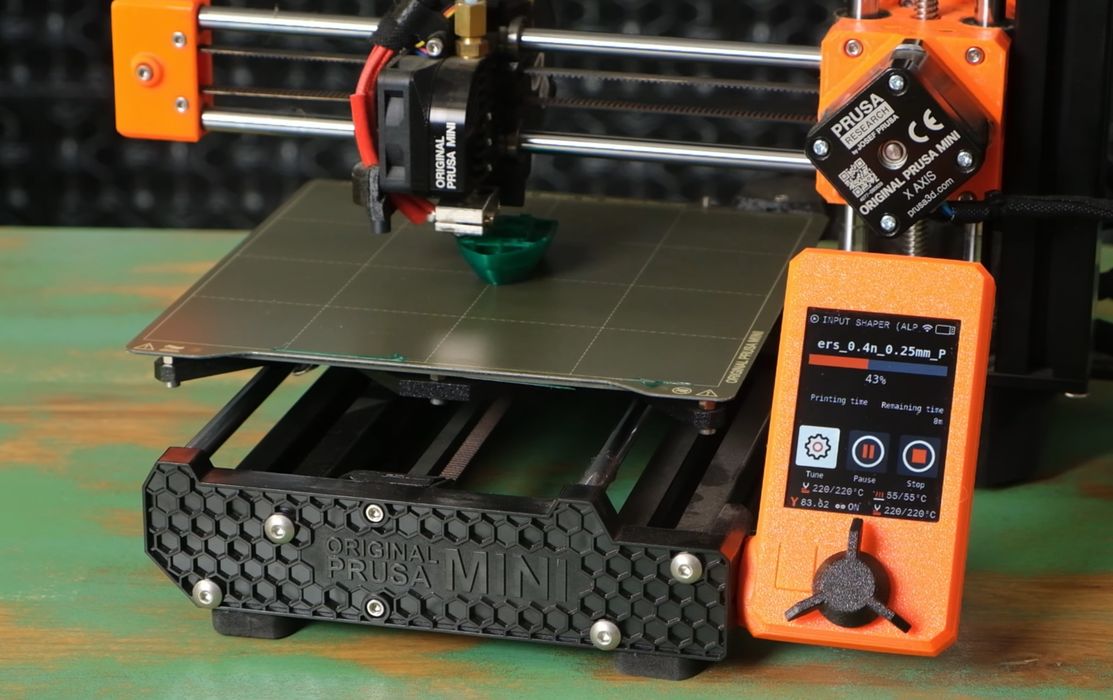
Josef Prusa announced they’ve made their Mini 3D printer a whole lot faster.
In a post this week, Prusa explained:
“Your MINI just got several times faster! Our team has done the impossible and ported the MK4 firmware to the MINI’s modest CPU and smaller RAM.”
The Mini is the smallest 3D printer from the company, and the least expensive. We previously reviewed the interesting device, and found it to produce very good output for the price.
However, like all FFF devices of its day, the Mini wasn’t a particularly fast printer. It would run at 40-80mm/s, like every other 3D printer at that time.
Meanwhile there has been a kind of high speed revolution taking place among 3D printer manufacturers. The introduction of vibration compensating firmware enabled FFF 3D printers to be operated at far higher speeds without affecting print quality.
Most of the new desktop 3D printers announced in the past few months are high speed in one way or another, and it’s almost becoming a de facto standard for new offerings.
Meanwhile, most of us have “slow” 3D printers on our desktops. Some of us have the popular Prusa Mini 3D printer, which, of course, operates at now tedious print speeds.
This has changed as Prusa Research announced a way to make the machine faster. The company has raced to develop specialized firmware for their new flagship 3D printer, the MK4. The MK4 boasted high speed 3D printing, but required a firmware update to do so. This is a critical step for the company, which now faces multiple competitors with high speed devices already on the market, some of which are available at far lower price points.
Somehow the company managed to port the still-in-development high speed firmware to the Prusa Mini. This is quite impressive, because the Mini sports lower storage and processing capability than its much larger sibling, the MK4.
It’s now possible to download this firmware and try it out on your Mini. However, note that it is still very early, and indeed the firmware is classified as “alpha” — meaning it’s even earlier than “beta”. You know that that means: risk of failure, so act accordingly. Prusa Research indicates they expect the final firmware to be properly released in about a month or so.
The company was able to 3D print a #3DBenchy in only 16 minutes on an upgraded Mini, which is very impressive. Typically this print would take well over an hour to complete, suggesting that the effective speed increase could be around 4X.
This is accomplished through the new “input shaping” feature in the firmware. This feature performs an analysis of requested movements and tweaks the stepper motors on the fly to compensate for the vibration that develops during high speed printing. Usually this not only allows faster speed, but also increases the quality of the prints.
However, remember that the Mini is not particularly robust mechanically due to its efficient design. Most high speed 3D printers are built to withstand speedy movements of the toolhead to dampen vibration, but that wasn’t the plan for the original Mini. The extrusion system also was not designed for high volume deposition.
To put it another way, it’s like putting a very powerful engine into a modest-level car: You get the speed, but not necessarily the total performance.
Nevertheless, this is a fantastic upgrade for the Mini, and should be considered by any Mini operator — especially after the official release. By the way, this upgrade is provided free of charge by Prusa Research.
Via Prusa Research
